
Holborn is an area in London, England and is located in the London Borough of Camden and the City of London. It is in Central London and part of the West End. Holborn is apart of the Ward of Farringdon Without.

Icknield Street or Ryknild Street is a Roman road in England, with a route roughly south-west to north-east. It runs from the Fosse Way at Bourton on the Water in Gloucestershire to Templeborough in South Yorkshire. It passes through Alcester, Studley, Redditch, Metchley Fort, Birmingham, Sutton Coldfield, Lichfield, Burton upon Trent and Derby.

Bedminster, colloquially known as Bemmy, is a district of Bristol, England, on the south side of the city. It is also the name of a council ward which includes the central part of the district.

Gropecunt Lane was a street name found in English towns and cities during the Middle Ages, believed to be a reference to the prostitution centred on those areas; it was normal practice for a medieval street name to reflect the street's function or the economic activity taking place within it. Gropecunt, the earliest known use of which is in about 1230, appears to have been derived as a compound of the words grope and cunt. Streets with that name were often in the busiest parts of medieval towns and cities, and at least one appears to have been an important thoroughfare.
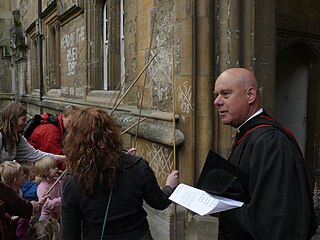
Beating the bounds or perambulating the bounds is an ancient custom still observed in parts of England, Wales, and the New England region of the United States, which traditionally involved swatting local landmarks with branches to maintain a shared mental map of parish boundaries, usually every seven years.
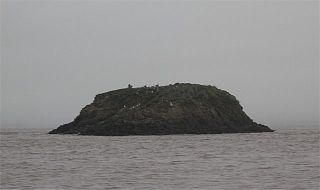
Denny Island is a small uninhabited rocky island of 0.24 hectares, with scrub vegetation, in the Severn Estuary. Its rocky southern foreshore marks the boundary between England and Wales. Above high water mark, the island is reckoned administratively to Monmouthshire, South Wales. The island also marks the north-western limit of the City of Bristol's water boundary in the Severn estuary.
Montfichet's Tower was a Norman fortress on Ludgate Hill in London, between where St Paul's Cathedral and City Thameslink railway station now stand. First documented in the 1130s, it was probably built in the late 11th century. The defences were strengthened during the revolt of 1173–1174 against Henry II.

Magpie Lane is a narrow historic lane in central Oxford, England. It leads south from the High Street where it is at its narrowest, now completely pedestrianised as a pavement, and north from the cobbled Merton Street.

Temple Church, also known as Holy Cross Church, is a ruined church in Redcliffe, Bristol, England. It is on the site of a previous, round church of the Knights Templar, which they built on land granted to them in the second quarter of the 12th century by Robert of Gloucester. In 1313 the Knights Hospitaller acquired the church, following the suppression of the Templars, only to lose it in 1540 at the time of the Dissolution of the Monasteries. By the early 14th century, the church served as the parish church for the area known as Temple Fee. From around the same time, the rebuilding of the church on a rectangular plan started. This was completed by 1460, with the construction of a leaning west tower.
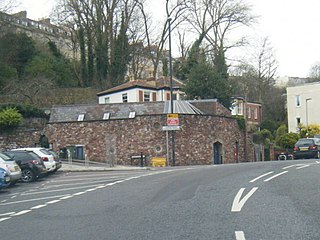
Jacob's Well in Cliftonwood, Bristol, England, is an early medieval structure incorporated into a 19th-century building on the corner of Jacob's Wells Road and Constitution Hill. It is thought to be a Jewish ritual bath.

Christmas Steps is a historic street in the city centre of Bristol, England.

Bewell's Cross is a lost monument which marked the boundary of Bristol. The name 'Bewel' goes back at least as far as the late twelfth century, when it is referred to in a charter of Count John as one of four points marking the limits of Bristol. The placenames specialist, Richard Coates, suggests that 'Bewell' is probably derived from the Old English for 'bee well' - i.e. a spring or well associated with bees. However, he notes that is just possible that the name represents a pruning of 'Beowolf's Well', given that a Bristolian called Elias or Elys recorded in about 1270 with the surname Beowolf.
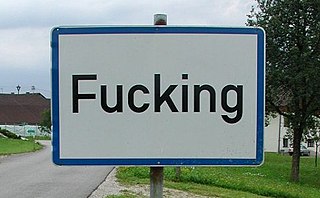
Place names considered unusual can include those which are also offensive words, inadvertently humorous or highly charged words, as well as place names of unorthodox spelling and pronunciation, including especially short or long names. These names often have an unintended effect or double-meaning when read by someone who speaks another language.

Tyndall's Park is an area of central Bristol, England. It lies north of Park Row and Queen's Road, east of Whiteladies Road and west of St Michael's Hill, between the districts of Clifton, Cotham and Kingsdown. It includes the campus of Bristol Grammar School, and many of the buildings of the University of Bristol.
Bristol City Council, formerly known as The Bristol Corporation, is the local government authority governing the city of Bristol, England. Following the Norman conquest of England in 1066, successive royal charters granted increasing rights of local governance to Bristol. County status was attained in 1373 and city status in the early sixteenth century. Bristol Corporation was established in the nineteenth century and the office of Lord Mayor was created in 1888. Following a brief period as part of the county of Avon in the late twentieth century, Bristol regained its status as a city and county in 1996.
The Bristol Record Society is a text publication society which publishes scholarly editions of historical records and texts relating to the history of the City of Bristol. Founded in 1929, it is one of the oldest such societies devoted to the publication of material relating to an individual town or city. Through its history, it has typically published at least one volume each year, on matters ranging from the civic charters of the medieval city, to the diary of Sarah Fox, an 18th-century Quaker. The core aims of the Society are to encourage the preservation / study of historical documents relating to the history of Bristol and to make available the historical material that can be used to study the city's history.

David Hughson, which may have been a pen name of Edward Pugh, was a writer on the topography and history of London. He produced a description of the city based on "an actual perambulation" (walk) that was published in six volumes between 1805 and 1809 and contains 150 copper plate engravings principally based on illustrations by Robert Blemmell Schnebbelie and Edward Gyfford. He also produced works on topical matters such as the East India Company, religious subjects, and works of household management targeted at people of the "middling and genteel ranks of life".

The Tolzey Court was a court with civil jurisdiction that was held in the English city of Bristol. First mentioned in 1344, it may have developed out of the borough hundred court. It was originally held in a room on Corn Street but later moved to the Bristol Guildhall on Broad Street. The court absorbed the Mayor's Court and at least one of Bristol's court of piepowders.
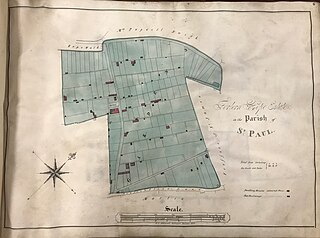
The Forlorn Hope Estate is an area of Bristol in St Paul's. The 13-acre estate was originally a farm owned by St Nicholas Church vestry from 1693. At that time it consisted of a main dwelling house, stables, associated buildings and gardens of c. 2.5 acres, plus fields of c. 10.5 acres. By 1828 the estate had been divided into a number of smaller properties and gardens. During the 1870s the estate was then thoroughly redeveloped, with a new road layout, as part of the urban development of Bristol. The 'Forlorn Hope Estate' was a separate charity until 2004, the assets now being part of St Nicholas with St Leonard Educational Charity. As such, it still exists as a legal entity, with the proceeds of the estate being employed for religious education in schools and youth organisations within the Bristol.
The Bristol perambulation was a civic ritual, usually performed annually, in Bristol, England, from the sixteenth to the nineteenth centuries. Also called 'beating the bounds' it usually involved a party of civic officers walking or riding around the 8 miles (12.9 km) land boundary of the city and county of Bristol. On the way they inspected the 'shirestones' to ensure all were visible and in good order.
![[in cornerio cuiusdam] 'clausi vocati Fockynggroue': [in the corner of a certain] field called Fucking Grove Fockynggroue.jpg](http://upload.wikimedia.org/wikipedia/commons/thumb/6/63/Fockynggroue.jpg/220px-Fockynggroue.jpg)

















